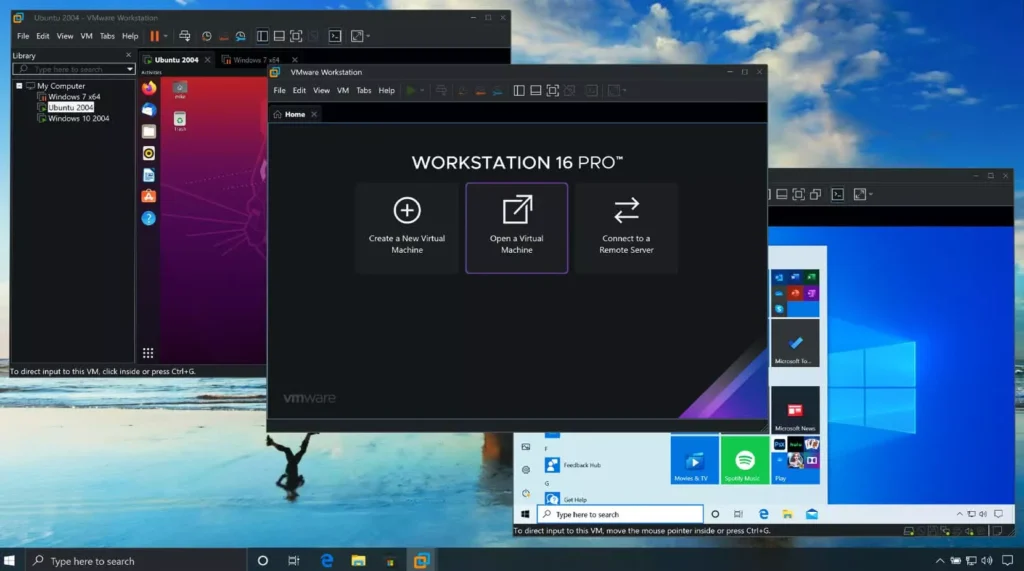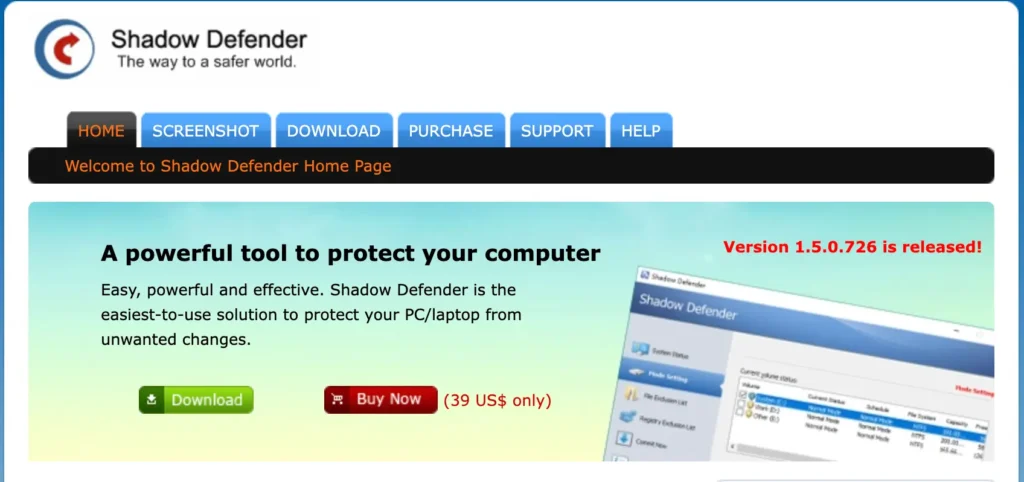Last updated: November 6, 2025
In the modern digital era, protecting your data is paramount. As cybercrime rates continue to rise, running untrusted applications or visiting risky websites without a protective barrier is a major security risk.
A Sandbox is a virtualization technique that creates an isolated, secure environment. Any application running inside the sandbox cannot access or modify your device’s core operating system, files, or system settings, effectively locking malware inside a temporary cage.
To safeguard your system from intruders and malicious software, here are the best and most current sandbox and isolation tools for Windows in 2025.
See also: Top 10 Free Malware Removal Tools for Windows (2025 Edition)
Table of Contents
The Top 8 Free & Modern Sandbox Software for Windows
1. Windows Sandbox (Official Microsoft Solution)

This is the most trusted and convenient solution for users of Windows 10/11 Pro, Enterprise, and Education. Built directly into the OS, it provides a lightweight, temporary desktop environment.
- How it Works: It uses Microsoft’s hypervisor to create a fresh, isolated virtual environment dynamically. When you close the Windows Sandbox window, everything—the installed software, files, and any malicious code—is permanently deleted.
- Best For: Quickly testing suspicious files, running installers from unknown sources, or performing single-use web browsing tasks.
- Availability: Built into Windows 10/11 Pro, Enterprise, and Education editions.
2. Sandboxie Plus (Community Standard)
Sandboxie has long been the gold standard for application sandboxing. It was acquired by Sophos, then open-sourced and is now actively maintained and enhanced as Sandboxie Plus. It is perfect for isolating individual applications like web browsers or email clients.
- How it Works: Instead of creating a whole virtual desktop, it isolates selected applications, redirecting any changes the app tries to make (like writing a file or changing a registry key) to a safe, private location within the sandbox folder.
- Best For: Isolating web browsers (Chrome, Firefox, Edge) to prevent drive-by downloads, or securely running chat applications.
- Availability: Free and open-source for the basic version on all modern Windows versions.
3. Oracle VM VirtualBox (Full Virtualization)
For the ultimate security, a dedicated Virtual Machine (VM) offers the most complete form of isolation. VirtualBox is a free, powerful tool for creating and managing a separate, full-featured operating system (like another copy of Windows or a Linux distribution).
- How it Works: It simulates a complete computer system, including a CPU, memory, and hard drive. Malware in the guest OS (the VM) cannot directly interact with your host OS (your main PC).
- Best For: Running and testing extremely high-risk software, performing deep analysis of malware, or running old/incompatible software.
- Availability: Free for personal use on all Windows versions.
4. VMware Workstation Player (Robust Full Virtualization)

Similar to VirtualBox, VMware Player is a powerful and reliable virtualization tool, often preferred by IT professionals for its stability and features.
- How it Works: It runs a full guest OS within a window on your host computer, providing complete separation between the virtual and physical environment.
- Best For: Users who need a highly reliable, professional-grade sandbox or want to run an alternative operating system alongside Windows.
- Availability: Free for personal, non-commercial use.
5. Shadow Defender (System Snapshot)

While not a classic application sandbox, Shadow Defender is highly effective for overall system protection. It is a powerful “system snapshot” tool that prevents any unwanted changes from being saved to your actual hard drive.
- How it Works: It runs your system in “Shadow Mode,” where all changes—including file downloads, registry modifications, or malware infection—are applied only to a virtual copy. A simple restart completely wipes the virtual changes and restores your system to its original, clean state.
- Best For: Protecting public-access computers, or for users who frequently test software and need an instant, guaranteed system rollback.
- Availability: Paid software, but offers a free trial. (Included here as it is the functional replacement for the defunct ToolWiz Time Freeze).
6. Comodo Dragon / Comodo Firewall

Comodo, a well-known name in cybersecurity, still offers sandboxing capabilities integrated into its security suites and browsers.
- How it Works: Comodo’s security software can automatically identify and isolate untrusted programs, running them in a basic, restricted container. Comodo Dragon, a Chromium-based browser, often includes built-in isolation features.
- Best For: Users who want their antivirus or firewall to automatically handle the sandboxing process without manual intervention.
- Availability: Basic versions of the Comodo Firewall are free.
7. Turbo
Turbo (formerly Turbo.net) focuses on application virtualization and containerization. It allows developers and power users to run thousands of applications instantly from the cloud or locally, without installing them, thereby isolating them from the host system.
- How it Works: It streams applications and their dependencies in isolated containers, ensuring that the apps run without conflicts and cannot access the host operating system’s files.
- Best For: Developers, testers, or corporate environments needing to run specific versions of software (like web browsers or IDEs) without installing them locally.
- Availability: Free tier with limits; commercial subscription required for full features.
8. The Guest Account
For basic security, simply logging into a standard Windows Guest Account or a Standard User Account provides a basic layer of sandboxing.
- How it Works: These accounts have limited permissions and cannot install most software or make system-wide changes to the OS or files belonging to the Administrator account.
- Best For: Letting a child or guest use your PC for simple tasks like web browsing or light games.
- Availability: Built into all Windows versions.
FAQs
| Question | Answer |
| Is Windows Sandbox 100% safe? | Yes. The programs installed in the Windows Sandbox environment operate independently of the host computer. Whatever occurs in the sandbox—including virus infection or file deletion—stays strictly within the temporary virtual system, and your host PC remains secure. |
| How can I enable Windows Sandbox? | You must first enable virtualization in your computer’s BIOS/UEFI settings. Then, in Windows, go to Control Panel > Programs > Turn Windows features on or off, and check the box for Windows Sandbox. |
| Can a sandbox prevent viruses? | Yes. A sandbox is an isolation tool. If ransomware or a virus is executed inside it, it can only infect the files and components within that isolated container, leaving your primary operating system and personal data untouched. |
| What is the difference between a VM and a Sandboxie? | A VM (Virtual Machine) creates a complete, separate operating system environment (full PC simulation). Sandboxie isolates individual applications within your existing operating system, which is much more lightweight. |
See also: Temporary Email Tools: 10 Best Services for Privacy in 2025





